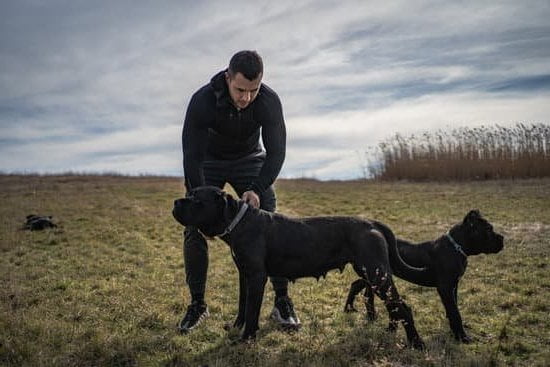Are you wondering, “how do I train my dog to use a leash?” Leash training is an essential skill for both you and your furry companion.
It not only allows for safe and controlled walks, but also fosters a better relationship between you and your dog. In this article, we will explore the importance of leash training for dogs, provide tips on understanding your dog’s behavior and body language, and offer guidance on choosing the right leash and collar for your pet.
Leash training is crucial for ensuring the safety of your dog, yourself, and others. A well-trained dog can prevent accidents and unwanted behavior while out on walks. Understanding your dog’s behavior and body language is the first step towards successful leash training. By recognizing signs of stress or fear in your pet, you can address any underlying issues that may be hindering their ability to walk calmly on a leash.
Choosing the right leash and collar for your dog is also a key factor in successful leash training. The type of equipment you use can greatly impact your dog’s comfort level and overall experience with walking on a leash. With the proper tools, you can introduce the leash to your dog in a positive way, setting them up for future success in their training journey.
Understanding Your Dog’s Behavior and Body Language
When it comes to leash training your dog, it’s important to understand their behavior and body language. Dogs communicate through their body language, and this can give you valuable insight into how they are feeling during the training process. Understanding your dog’s behavior will also help you identify any signs of stress or discomfort while using a leash.
One of the key components of understanding your dog’s behavior is to observe their body language. If your dog is excited about going for a walk, they may wag their tail and have a relaxed body posture.
However, if they are feeling anxious or fearful, they may show signs of avoidance such as cowering, avoiding eye contact, or even aggression. By paying attention to these signals, you can adjust your training approach to ensure that your dog feels safe and comfortable while using a leash.
In addition to observing their body language, it’s crucial to understand the underlying reasons for any behavioral issues that may arise during leash training. Some dogs may be resistant to using a leash due to previous negative experiences or lack of socialization. By identifying these underlying causes, you can tailor your training methods to address these specific challenges and help your dog become more comfortable with using a leash.
| Understanding Your Dog’s Behavior | Body Language |
|---|---|
| Observing body language | Communicating through body language |
| Identifying signs of stress or discomfort | Adapting training approach accordingly |
| Understanding underlying reasons for resistance | Tailoring training methods for specific challenges |
Choosing the Right Leash and Collar for Your Dog
When it comes to leash training your dog, choosing the right leash and collar is crucial. The type of equipment you select can significantly impact the success of your training efforts and your dog’s comfort. Here are some key factors to consider when choosing a leash and collar for your furry friend.
Consider Your Dog’s Size and Strength
It’s important to choose a leash and collar that are suitable for your dog’s size and strength. For smaller breeds, a lightweight leash and collar may be more appropriate, while larger dogs may require a sturdier, more heavy-duty option. Consider the materials used in the construction of the leash and collar to ensure they can withstand your dog’s strength during walks.
Choose the Right Type of Collar
There are various types of collars available, each with its own advantages and potential drawbacks. Traditional buckle collars are simple and easy to use, but they may not be ideal for dogs that pull on the leash. Martingale collars provide more control without choking the dog, making them a good option for dogs that tend to lunge or pull during walks. Harnesses can also be an effective choice for controlling strong or excitable dogs without putting pressure on their necks.
Selecting the Appropriate Leash
Leashes come in different lengths and materials, so it’s important to consider your specific needs when selecting one for your dog. A standard 6-foot leash is often recommended for training purposes as it provides enough slack for controlled freedom while keeping your dog close by.
Retractable leashes can offer more freedom but may not be suitable for leash training as they make it difficult to maintain consistent tension. Consider the material of the leash as well; nylon leashes are durable and affordable, while leather leashes may offer more comfort and style.
By carefully considering these factors when choosing a leash and collar for your dog, you can set yourself up for successful leash training sessions that prioritize both safety and comfort.
Introducing the Leash to Your Dog in a Positive Way
When introducing the leash to your dog, it is essential to do so in a positive and gentle manner. This will help your dog associate the leash with positive experiences, making the training process much smoother. Here are some tips on how to introduce the leash to your dog in a positive way:
- Start by allowing your dog to become familiar with the leash in a comfortable environment, such as inside your home or backyard. Let your dog sniff and investigate the leash at their own pace.
- Once your dog is comfortable with the sight and smell of the leash, gently clip it onto their collar or harness. Offer plenty of praise, attention, and even treats to create a positive association with wearing the leash.
- Practice short sessions of wearing the leash inside before moving on to outdoor walks. Use positive reinforcement techniques such as treats and praise when your dog walks calmly with the leash on.
Remember that every dog is different, so be patient and go at your dog’s pace when introducing the leash. With consistency and positive reinforcement, your dog will soon learn to associate the leash with enjoyable walks and adventures outside.
By introducing the leash to your dog in a positive way, you are setting a strong foundation for successful leash training. This positive association will make it easier for you to guide and train your dog while on walks, ultimately leading to a well-leash-trained pet that can enjoy outings safely and happily.
Walking and Training Techniques for Leash Training
When it comes to leash training your dog, it’s important to start with the right techniques to ensure a positive experience for both you and your furry friend. One of the first steps in leash training is teaching your dog to walk beside you without pulling or tugging on the leash. This can be achieved through positive reinforcement, such as giving treats or praise when your dog walks calmly by your side.
Another technique for leash training is to establish a consistent walking routine with your dog. This means taking them out for regular walks at the same time each day and following a consistent walking route. Dogs thrive on routine, so having a set schedule for walks can help reinforce good leash behavior.
It’s also important to use basic obedience commands during leash training, such as “sit,” “stay,” and “heel.” By incorporating these commands into your walking routine, you can teach your dog to respond to your cues while on the leash. This not only improves their behavior during walks but also strengthens the bond between you and your pet.
| Technique | Description |
|---|---|
| Clicker Training | A method of positive reinforcement training using a clicker device paired with treats. |
| Lure-Reward Training | Using treats or toys as a lure to guide your dog into different positions while on the leash. |
| Desensitization | Gradually exposing your dog to various stimuli while on the leash, such as other dogs or loud noises, to reduce anxiety or fear-based behaviors. |
Addressing Common Leash Training Challenges
Leash training can present some challenges for both new and experienced dog owners. Addressing these challenges is crucial to ensure that your dog becomes comfortable and obedient when walking on a leash. Below are some common leash training challenges and how to overcome them:
- Pulling: Many dogs have a natural instinct to pull on the leash, especially when they’re excited or curious about their surroundings. To address this challenge, you can try using a front-clip harness or head halter to discourage pulling. Additionally, practice stopping and changing directions when your dog starts pulling to teach them that pulling doesn’t lead to forward movement.
- Reactivity: Some dogs may exhibit reactive behavior towards other dogs, people, or animals while on a leash. To address this challenge, it’s essential to bring along high-value treats and reward your dog for calm behavior around triggers. Gradually desensitize your dog by exposing them to controlled situations where they can learn to remain calm and focused while on the leash.
- Fear or Anxiety: Dogs who are fearful or anxious may resist wearing a collar or harness and walking on a leash. To overcome this challenge, start by introducing the collar or harness gradually, allowing your dog to sniff and get accustomed to it before putting it on. Use positive reinforcement techniques such as treats and praise during this process to create positive associations with wearing the gear.
Overcoming these common leash training challenges requires patience, consistency, and understanding of your dog’s behavior. By addressing these challenges with the right techniques and approach, you can effectively train your dog to use a leash confidently and comfortably.
Remember that every dog is unique, so it’s important to tailor your training methods based on your dog’s individual needs and temperament. If you’re struggling with leash training despite trying various approaches, don’t hesitate to seek guidance from a professional dog trainer who can provide personalized assistance in addressing specific challenges.
Patience and Consistency in Leash Training
The Role of Patience in Leash Training
Patience is a key factor when it comes to leash training your dog. Remember that every dog learns at their own pace, and it may take some time for them to get used to the idea of walking on a leash. It’s important to remain patient and not get frustrated if your dog doesn’t seem to grasp leash training right away. Keep in mind that positive reinforcement and consistency are crucial in this process.
The Importance of Consistency
Consistency is another vital aspect of leash training. Your dog needs to understand that they should consistently follow certain behaviors when they’re on the leash, such as walking calmly beside you and not pulling or lunging. This means you need to be consistent in enforcing these expectations during every walk. If you allow your dog to pull on the leash sometimes but not others, they will become confused and have a harder time learning what is expected of them.
Tips for Maintaining Patience and Consistency
To ensure success in leash training, set realistic goals for your dog based on their individual personality and behavior. It’s also important to stay calm and composed during training sessions, as dogs can pick up on their owner’s emotions.
Additionally, make sure that everyone who walks the dog follows the same rules and techniques so that your pet doesn’t become confused by conflicting messages. With patience, consistency, and positive reinforcement, you can effectively train your dog to use a leash while strengthening the bond between you both.
The Benefits of a Well-Leash-Trained Dog
In conclusion, leash training is an essential skill for every dog owner to teach their furry companions. A well-leash-trained dog not only ensures the safety of both the dog and its owner but also fosters a better relationship and understanding between them. Understanding the importance of leash training, your dog’s behavior and body language, as well as choosing the right equipment are all crucial elements in successfully training your dog to use a leash.
Introducing the leash to your dog in a positive way and using proper walking and training techniques will set the foundation for successful leash training. It is important to address common challenges that may arise during the process with patience and consistency. With time and dedication, any dog can learn to walk on a leash comfortably and obediently.
The benefits of having a well-leash-trained dog are numerous, including improved safety during walks, better control in public settings, increased opportunities for exercise and socialization, and ultimately a stronger bond between you and your pet. So, if you find yourself asking “how do I train my dog to use a leash,” remember that with the right approach, you can successfully teach your canine companion this important skill.
Frequently Asked Questions
How Do I Get My Dog to Use a Leash?
Getting your dog to use a leash requires patience and positive reinforcement. Start by getting your dog accustomed to the leash and collar, then gradually introduce short walks, rewarding good behavior with treats.
How Do I Train My Dog to Walk on a Leash Without Pulling?
Training your dog to walk on a leash without pulling involves consistency and positive reinforcement. Start by teaching them basic commands like “heel” and “stay” before gradually increasing the duration of walks.
How Long Does It Take to Leash Train a Dog?
The time it takes to leash train a dog varies depending on the individual dog and their willingness to learn. Some dogs may pick up leash training quickly within a few weeks, while others may take several months to fully grasp walking on a leash without pulling. Consistency and patience are key in this process.

Welcome to the blog! I am a professional dog trainer and have been working with dogs for many years. In this blog, I will be discussing various topics related to dog training, including tips, tricks, and advice. I hope you find this information helpful and informative. Thanks for reading!





